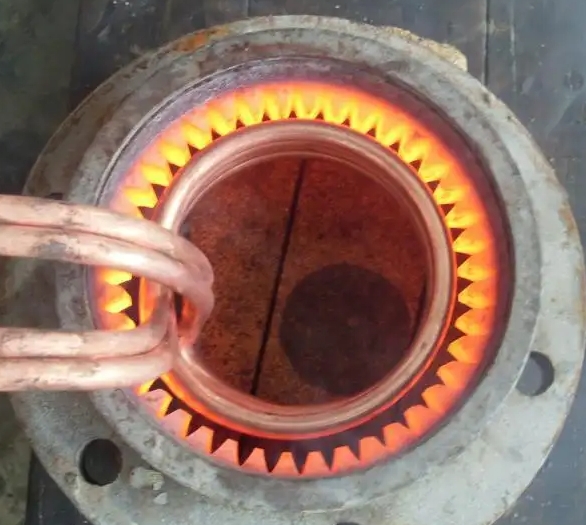- 27
- Mar
Implementation method of high-frequency hardening machine heat treatment technology of rotary tiller
Implementation method of high-frequency hardening machine heat treatment technology of rotary tiller
There are the following points in the implementation of the heat treatment process technology of the rotary cultivator using the high-frequency hardening machine:
1. The rotary cultivator is a thin sheet-shaped part. In order to prevent the deformation from being out of tolerance, it is generally quenched in a high-frequency quenching furnace and then sprayed with water to cool it. This can effectively reduce the labor intensity of straightening and increase the pass rate of heat treatment. To
2. When using oil-cooling and oil-bath tempering, the secondary tempering must be cleaned after cleaning, otherwise there may be a danger of explosion, so special attention should be paid to it. To
3. If the rotary tiller made of 65Mn adopts high-frequency quenching furnace for austempering heat treatment at 270-300℃, the overall effect is the best. The structure at this time is BT+M, which can not only meet the hardness requirements, but also obtain good Toughness and strength, while reducing the amount of quenching deformation.
4. The reason why the hardness of the blade and the handle of the rotary cultivator are different is that considering that the soil of the farmland is firm, there may be rocks, bricks, etc., the impact force during farming may be higher than that of sand, and the hardness of the handle is lower than The blade will reduce the impact, even if there is a small amount of deformation, it will not cause sudden breakage of the handle. The facts show that the effect is very good. To
5. The different hardness of the blade and handle of the rotary cultivator is achieved by two tempering at different temperatures. First, the austempering treatment is performed to ensure the hardness of the blade and increase the toughness, and then the handle is subjected to high temperature (About 500℃) air cooling after short-term tempering heat treatment (rapid tempering), the time should be based on the diathermy, so that the hardness of the handle is controlled below 48HRC (43-48HRC), at this time the structure of this part of the Fire Tropite, so the improved strength and toughness meet the requirements of impact resistance. To
6. Rotary tillers are generally heat treated after forging or roll forming. If forging waste heat can be used for quenching, the key is to control the amount of deformation, stop forging temperature and time. This method has the effect of saving energy and reducing consumption. To
Rotary cultivators are important agricultural tools with very high quality requirements. Therefore, it is indispensable to select a good high-frequency hardening machine.

